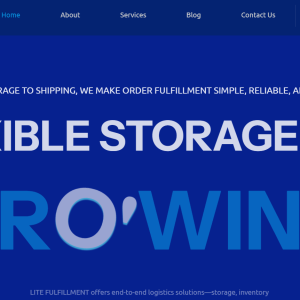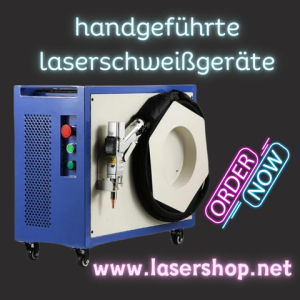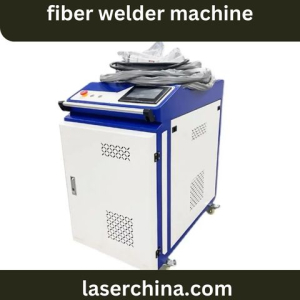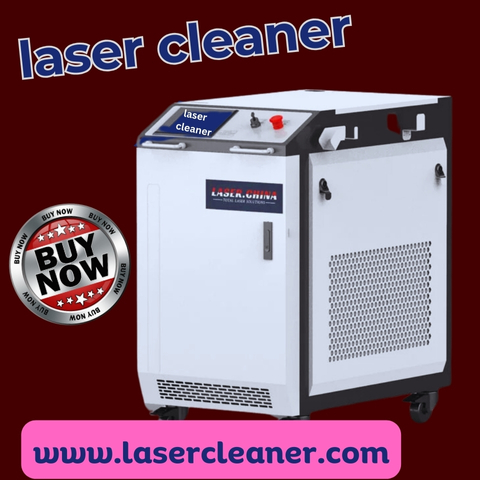In modern industries, maintaining clean and precise metal surfaces is no longer a task handled with harsh chemicals or abrasive blasting. The laser cleaner has become an innovative and sustainable solution for surface treatment, providing efficiency and precision that traditional methods cannot match. From automotive manufacturing to aerospace engineering, this technology is reshaping how factories, workshops, and production facilities handle rust, paint, and contaminants.
Understanding What a Laser Cleaner Is
A laser cleaner is an advanced device that uses focused laser beams to remove unwanted layers like rust, paint, oil, or oxidation from various materials without physical contact. Unlike mechanical or chemical cleaning methods, it operates on the principle of laser ablation—where the laser energy is absorbed by the contaminant layer, causing it to evaporate instantly without damaging the base material.
This process is not only faster but also safer for the environment, as it does not involve solvents, dust, or secondary waste. The technology behind it relies on fiber laser sources, capable of generating high-energy pulses with remarkable accuracy. The outcome is a clean surface ready for coating, welding, or inspection.
The Evolution of Industrial Cleaning Technology
Before laser cleaner systems gained recognition, industries heavily depended on methods like sandblasting, dry ice cleaning, or chemical baths. These processes required significant manual labor and generated hazardous waste, posing risks to both workers and the environment.
The introduction of laser cleaning technology marked a turning point. By offering a contactless, programmable, and residue-free approach, it allowed manufacturers to achieve better surface quality with minimal operational downtime. Over the last decade, as fiber laser technology improved, the laser cleaner evolved from a niche tool to an essential part of industrial maintenance and production lines.
Where Laser Cleaners Are Used
Laser cleaners have become indispensable in multiple sectors due to their adaptability and precision. In the automotive industry, they are used to remove rust, old paint, and welding residues from car bodies and components before recoating or assembly.
In aerospace manufacturing, precision cleaning is crucial. The laser cleaner prepares surfaces of engine components, turbine blades, and structural parts where even microscopic contaminants can impact performance.
For metal fabrication workshops, laser cleaning is the go-to process for pre-welding and post-welding preparation, ensuring joints are clean and free of oxidation. It’s also popular in mold cleaning, heritage restoration, shipbuilding, and electronics. Every industry that requires accuracy, cleanliness, and minimal material loss finds this technology valuable.
The Working Process of a Laser Cleaner
A typical laser cleaner operates through the interaction between laser pulses and the surface material. When the laser beam hits the contaminated surface, it is absorbed by the layer to be removed. The absorbed energy heats the layer rapidly, leading to vaporization or sublimation. Because different materials absorb light at different wavelengths, the laser parameters can be adjusted to target contaminants without affecting the substrate.
Operators can use handheld or automated systems depending on the size of the component or cleaning area. Modern laser cleaners include adjustable power settings, focusing lenses, and user-friendly interfaces that allow operators to control cleaning depth and precision.
Moreover, since the process doesn’t involve contact, there’s no risk of surface deformation or tool wear. This makes the laser cleaner a low-maintenance and long-term investment for production facilities.
Laser Cleaning in Modern Manufacturing
Manufacturers around the world are adopting laser cleaner systems as part of their production and maintenance strategies. In high-volume production environments, laser cleaning can be integrated with robotic arms or CNC systems to automate cleaning tasks.
For instance, in the production of battery components for electric vehicles, cleanliness is critical to ensure conductivity and bonding. The laser cleaner removes oxides and residues with unmatched precision. In shipyards, laser cleaning is used to remove corrosion from large metal plates, preparing them for repainting without introducing micro-scratches or altering structural integrity.
The repeatability and consistency of results make this technology attractive for quality-driven industries. It aligns with modern trends of sustainable manufacturing, where efficiency and eco-friendliness must coexist.
Why Industries Are Switching to Laser Cleaning
The shift toward laser cleaner systems is not just a trend; it’s a strategic move. Industries are under pressure to reduce waste, lower maintenance costs, and comply with strict environmental regulations. Laser cleaning meets these demands by eliminating the need for chemical solvents and reducing hazardous waste disposal.
Furthermore, the energy efficiency of fiber laser systems contributes to reduced operational costs over time. This combination of precision, cleanliness, and sustainability positions the laser cleaner as a smart investment for both small workshops and large-scale manufacturing plants.
Maintenance and Lifespan of a Laser Cleaner
Proper maintenance ensures the laser cleaner continues performing optimally for years. Since it involves no abrasive parts, the most critical maintenance tasks are cleaning the optics, checking the fiber cable integrity, and ensuring the cooling system functions properly. Regular inspections prevent dust accumulation and maintain consistent beam quality.
Manufacturers often provide guidelines for operating environments—keeping the system away from vibration, humidity, and direct sunlight enhances its longevity. Some modern laser cleaners come with monitoring software that tracks performance metrics, laser hours, and safety interlocks, ensuring operators stay informed about maintenance schedules.
The Environmental Impact of Laser Cleaning
A key reason for the rising popularity of laser cleaner systems is their environmentally friendly nature. Traditional cleaning methods produce secondary waste—chemical residues, sand particles, and polluted water. Laser cleaning, however, vaporizes contaminants without generating additional waste streams.
The process produces minimal emissions, which can be easily managed with standard ventilation systems. Since no chemicals are used, operators face fewer health risks, and workplaces remain cleaner and safer.
As global industries move toward sustainability, the laser cleaner aligns perfectly with green manufacturing standards by minimizing environmental footprints while maximizing operational efficiency.
Future of Laser Cleaning Technology
The future of laser cleaner technology looks promising as innovation continues to push its limits. Higher laser power, better beam control, and AI-integrated automation are enabling more precise and faster cleaning. While today’s systems are primarily used for metals, research is expanding into ceramics, composites, and even delicate materials like textiles or polymers.
In the coming years, expect to see laser cleaner units that are smaller, more energy-efficient, and capable of handling diverse applications with minimal operator input. Integration with Industry 4.0 systems will allow smart factories to monitor, schedule, and control cleaning processes automatically.
Final Thoughts
The laser cleaner represents the future of industrial surface cleaning—precise, eco-friendly, and efficient. Its ability to remove contaminants without damaging the substrate makes it an essential tool across multiple industries. As sustainability becomes central to global manufacturing, this technology stands out as a practical solution for maintaining quality and compliance.
Whether in heavy-duty production lines or delicate restoration projects, the laser cleaner delivers performance that traditional methods simply cannot match. With ongoing innovation and rising adoption, its role in shaping the next generation of industrial cleaning technology is undeniable.






